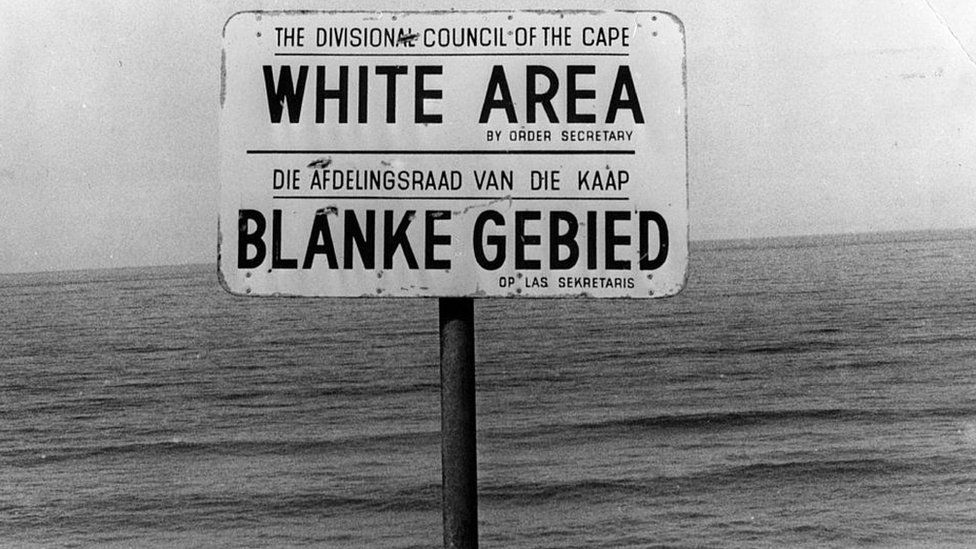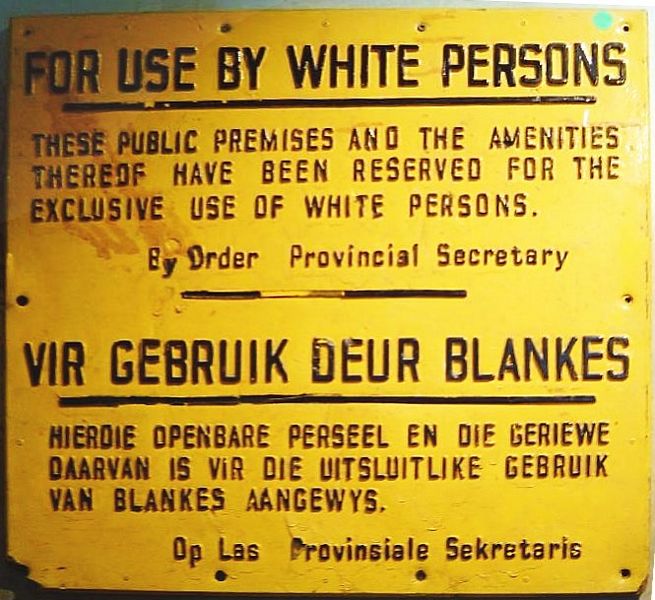RACIAL SEGREGATION IN SOUTH AFRICA

Racial segregation in South Africa was a major issue across the country which affected people’s lives especially for those who were non-white. This system was called as Apartheid which was a Afrikaan word standing for discrimination (HistoryExtra, 2015). In other words, Apartheid describes political and economic system of racial discrimination which was imposed by the white minority on non-white people (HistoryExtra, 2015). In this article, how the apartheid system started and affected society politically, economically as well as socially will be explained.
OCCURRENCE OF APARTHEID SYSTEM
The apartheid system was implemented by the governing party which was the National Party of South Africa (HistoryExtra, 2015). The system started in 1948 and lasted until 1994 (Kiddle, 2021). In the elections of 1948, the National Party got into power and in the following years new apartheid laws were made. The new laws enforced more strictly on non-white people (Kiddle, 2021). Under this system, the society in South Africa was divided according to their race and different races were forced to live separately from each other (Kiddle, 2021). Race discrimination was not a new phenomenon to South Africa, as racial legislation in the country could be seen back then in 1806 (HistoryExtra, 2015). However, segregation was extended greatly with the Population Registration Act of 1950.(HistoryExtra,2015). According to this act, South African society would be divided into four categories: Bantu (black South Africans), Coloured (those of mixed race), White and Asian (Indian and Pakistani South Africans (HistoryExtra, 2015). The Act was designed to protect white supremacy in the country (HistoryExtra, 2015).EFFECTS OF APARTHEID ON SOCIETY
The effects of apartheid were felt in every aspect of the daily life of South African society, particularly on non-whites (HistoryExtra, 2015). They were overcome badly by political, economical and social conditions because of the system that was imposed. For instance, the social lives of non-whites affected in a way that they were not allowed to live in the areas which belonged to the white minority. This was because of several land acts which set aside more than 80 percent of the country land for the white minority. In addition to this, non-whites were supposed to carry documents in order to authorize their presence in restricted areas (History, 2010). Moreover, the government divided public facilities, ambulances, hospitals, buses into whites and non-whites in order to inhibit communication between races (History, 2010). This establishment reached the target by limiting the activity of non-white labor unions, denying non-white participation in national government, and restricting the political rights of non-whites (History, 2010).
In addition to land acts and denial of non-white participation in the national government, by 1950, marriage and sexual relations between white and non-white South Africans were strictly banned (HistoryExtra, 2015). South Africans who disobeyed apartheid were sent to prison, fined, or whipped. Those who were suspected for being in a interracial relationship were hunted down under the Immorality Acts of 1927 and 1950 (HistoryExtra, 2015). The effects on South Africa’s non-white population was horrendous (HistoryExtra, 2015). Families were forced to split because of the laws. For example, if parents were black and white, their children were called colored and due to this reason, 3.5 million people were removed from their homes by governmental forces between 1961 and 1994 (HistoryExtra, 2015).
Additionally, racial segregation affected the lives of the people who were non-whites economically. To exemplify, they were forced to live in black homelands where they were given permission to run businesses. If non-whites wanted to live and work in designated white areas, they had to obtain permission from the government (HistoryExtra, 2015).
DISOBEDIENCE OF APARTHEID LAWS AND DEFIANCE CAMPAIGN

Credit (AFP via Getty Images. (1952). Defiance Campaign volunteers gather in Johannesburg as part of a civil disobedience campaign to protest the apartheid regime [Photograph] )
Besides this, the Defiance Campaign and resistance to apartheid attracted the attention of the United Nations (HistoryExtra, 2015). In 1973, the UN denounced apartheid, but the situation escalated in 1976 when police opened fire with tear gas and bullets on children in Soweto (HistoryExtra, 2015). The violence caused an outrage and the UN imposed an embargo on the sale of arms to South Africa in 1985 followed by economic sanctions from the UK and US (HistoryExtra, 2015).
PRESIDENCY OF NELSON MANDELA AND ABOLISHMENT OF APARTHEID LAWS

Credit (Joe, A. (1990). Nelson Mandela and his wife raise their fists upon Mandela’s release from Victor-Verster Prison after 27 years [Photograph])
In conclusion, racial segregation was a system in South Africa that affected the lives of people who were non-whites. Additionally, black people in South Africa were deprived of human rights politically, socially, and economically which they could not be the same as the white minority living in South Africa. Thanks to Nelson Mandela and Frederik Willem de Klerk, this system that imposed white supremacy came to an end. Nelson became a figure of equality and when he died, he became one of the greatest men ever to live on planet earth (History, 2010). Today, there are a lot of monuments left in the memory of Nelson (History, 2010).
WORK CITED
Kiddle (2021). “Apartheid facts for kids” Kiddle Encyclopedia. Available at
History (2010).”Apartheid” A&E Television Networks. Available at
https://www.history.com/topics/africa/apartheid
HistoryExtra (2015). “Your guide to apartheid” BBC History. Available at









